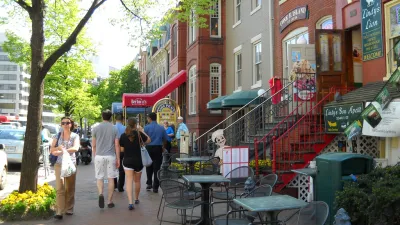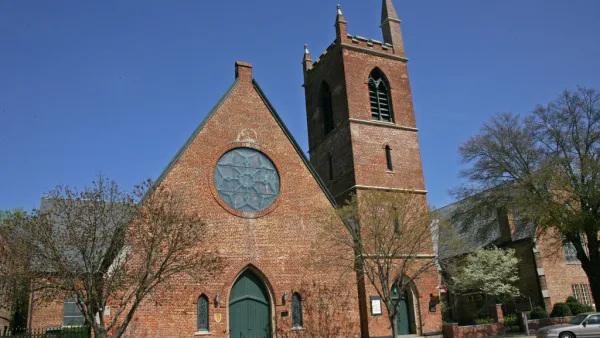New research shows areas with a heavy concentration of commercial offices experience 40 percent higher crime rates than neighborhoods that mix residential and commercial uses.

According to an article by Kaley Overstreet in Arch Daily, “mixed-use spaces do more than just create a diverse array of experiences in cities- they might also help contribute to lower crime rates.” Mixed-Use neighborhoods, writes Overstreet, “enhance social connections and promote public transportation, while also encouraging the themes of ‘live, work, and play’ in one concentrated zone.”
According to Overstreet, “In a study published under the University of Pennsylvania Law Review, data showed that it’s more likely that neighborhoods with local cafes, bars, offices, and residential areas are inherently more likely to have more ‘eyes on the street’ at more hours of the day. The collective public surveillance may deter criminals.” In the same study, “The areas where commercial offices were heavily focused experienced over 40% more crime than in other neighborhoods, especially those that included residences.”
The research concluded that it makes sense that residents may feel a greater sense of ownership for the neighborhoods where they live versus neighborhoods where they solely work, and when those two have some sort of overlap, people still feel protective of the bars, restaurants, and stores that they consider to be in their neighborhood.
Overstreet points out that “What this tells urban planners and architects is that zoning laws may be a contributing factor and an important tool for helping prevent crime in cities.”
FULL STORY: How Mixed-Use Neighborhoods Can Reduce Crime Rates

Analysis: Cybertruck Fatality Rate Far Exceeds That of Ford Pinto
The Tesla Cybertruck was recalled seven times last year.

National Parks Layoffs Will Cause Communities to Lose Billions
Thousands of essential park workers were laid off this week, just before the busy spring break season.

Retro-silient?: America’s First “Eco-burb,” The Woodlands Turns 50
A master-planned community north of Houston offers lessons on green infrastructure and resilient design, but falls short of its founder’s lofty affordability and walkability goals.

Test News Post 1
This is a summary

Analysis: Cybertruck Fatality Rate Far Exceeds That of Ford Pinto
The Tesla Cybertruck was recalled seven times last year.

Test News Headline 46
Test for the image on the front page.
Urban Design for Planners 1: Software Tools
This six-course series explores essential urban design concepts using open source software and equips planners with the tools they need to participate fully in the urban design process.
Planning for Universal Design
Learn the tools for implementing Universal Design in planning regulations.
EMC Planning Group, Inc.
Planetizen
Planetizen
Mpact (formerly Rail~Volution)
Great Falls Development Authority, Inc.
HUDs Office of Policy Development and Research
NYU Wagner Graduate School of Public Service



























